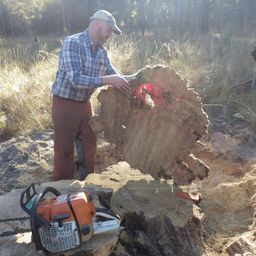A clarion call from a fading record-- tree-rings, fire-scars, and restoration implications for central Appalachian red pine (Pinus resinosa Ait.) forest communities
My Session Status
Click below to enter the virtual room.
Enter virtual roomFire-dependent red pine (Pinus resinosa Ait.) vegetation communities in the central Appalachians face significant threats from mounting land-use and climate change pressures. Tree-ring and fire-scar chronologies developed from living and remnant (stumps, snags) red pine trees can provide critical historical ecology information to guide modern restoration of fire-adapted vegetation communities. Here, we present tree-ring and fire-scar records recovered from red pine trees (n= 267) covering the time period of 1370-2016 CE from a landscape in north-central Pennsylvania, USA, and discuss the clear call to restoration they provide. Dated fire scars show that fire was an important ecological component of this landscape prior to when fire exclusion practices were widely adopted circa 1915, and that the current period of reduced fire activity is unprecedented in at least the previous 500 years. Beyond fire scars, the spatial and temporal extent of the red pine tree-ring record provides evidence that red pine was historically a more important component of this landscape than it is today. The conservation and perpetuation of central Appalachian red pine vegetation communities will require incorporating recurring prescribed fire into their management.
